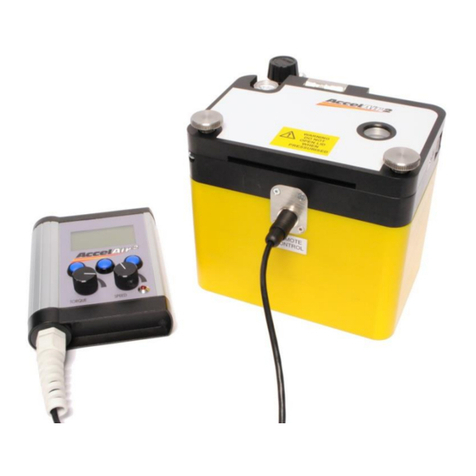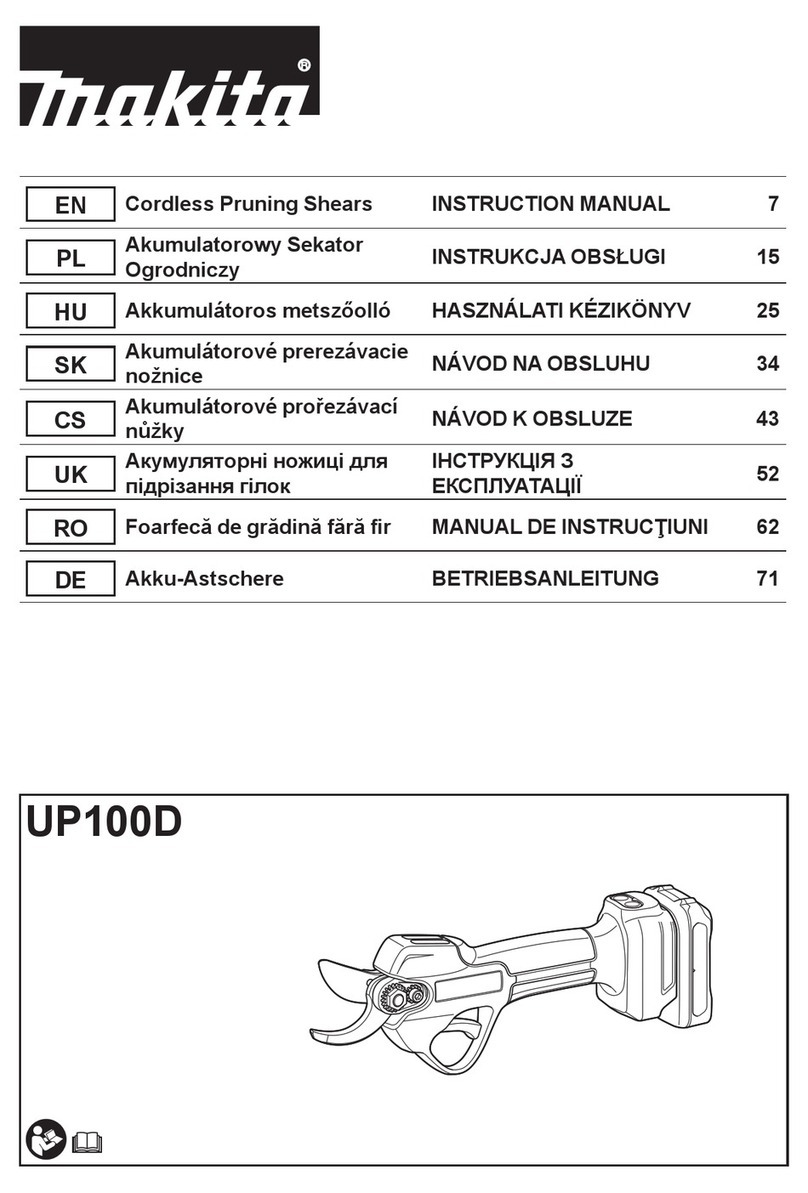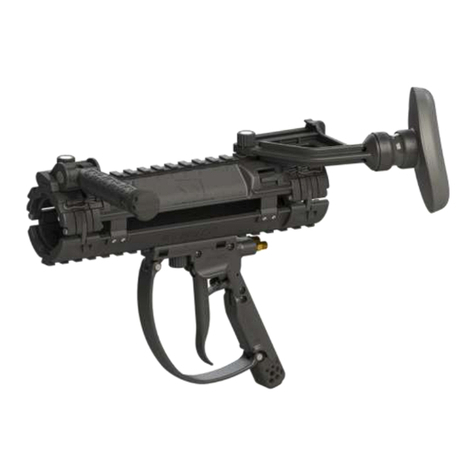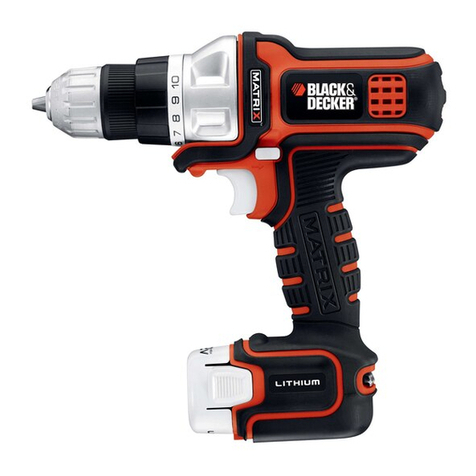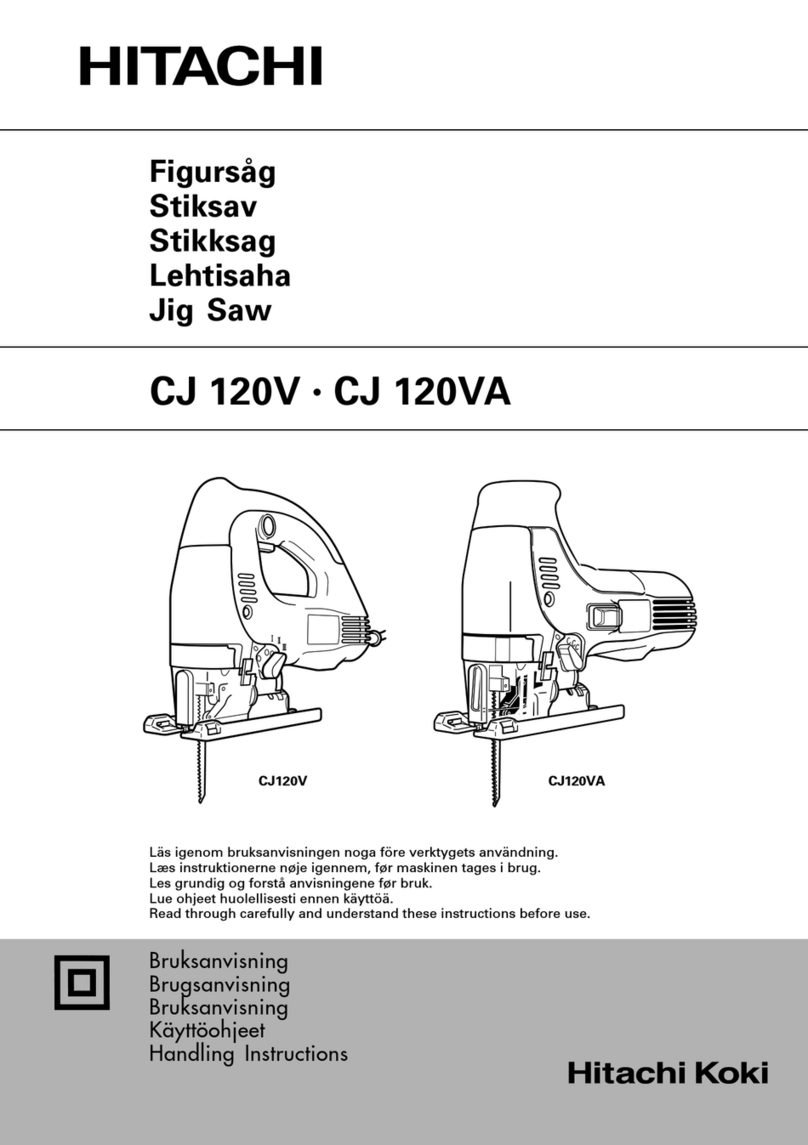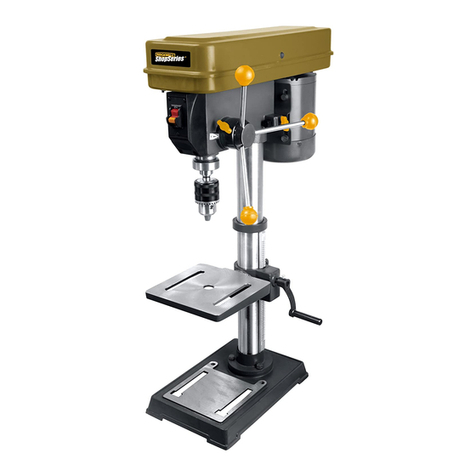CBS BREEZE User manual

Page 1 of 40
CBS Products Ltd, Pillings Road, Oakham, Rutland, LE15 6QF, UK Tel: +44(0) 1572 723 665
OPERATING MANUAL
C–1300–04-T (BREEZE)
Serial Numbers 0161 Onwards –See revision 03 for earlier models.
CABLE BLOWING MACHINE
Copyright 2004 by CBS Products Limited
All rights reserved. No part of this publication may be copied, reproduced or
transmitted in any form whatsoever without the written permission of CBS Products Ltd.

Page 2 of 40
REVISION HISTORY:
Rev.no
Date
Details
Author
01
03.08.06
Original issue
A. Sibun
02
05.03.08
Programming Instructions Updated
A.Sibun
03
03.10.08
Operating Procedure and pictures updated
A.Sibun
04
13.10.08
Programming Instructions Updated
A.Sibun
05
30.01.12
Responsible Person Updated
L.Kilpin

Page 3 of 40
CONTENTS
1.0 Safety Instructions
2.0 Critical Points
3.0 General Description
4.0 Specification
5.0 Operating procedures
6.0 Maintenance
7.0 Procedure for changing inserts in the tube clamp
8.0 Procedure for changing inserts in the air box
9.0 Procedure for changing inserts in the infeed guide
10.0 Procedure for re-positioning the measuring system fixed roller
11.0 Procedure for replacing the air box housing seal
12.0 Procedure for changing the air box infeed guide
13.0 Procedure for changing the drive rollers
14.0 Monthly Service –check list
15.0 Service History Record
16.0 Tube integrity and Lubrication
17.0 Recommended Spares List
APPENDICES
Appendix 1 Cable and tube insert selection chart.
Appendix 2 Recommended torque control potentiometer settings
Appendix 3 Counter/Ratemeter Programming Instructions

Page 4 of 40
1.0 SAFETY INSTRUCTIONS
THIS EQUIPMENT SHOULD BE USED ONLY BY PERSONNEL WHO HAVE
BEEN GIVEN THE APPROPRIATE TRAINING, AND WHO ARE
COMPETENT TO USE IT.
THESE INSTRUCTIONS ARE TO BE MADE AVAILABLE TO OPERATORS
OF THIS EQUIPMENT AT ALL TIMES, FAILURE TO OBSERVE THESE
SAFETY INSTRUCTIONS COULD RESULT IN SERIOUS PERSONAL
INJURY AND/OR PROPERTY DAMAGE.
WORK AREA AND GENERAL SAFETY
1. Read and understand the operation and maintenance manual supplied with this
equipment. Keep it in a convenient place for future reference.
2. Keep children and untrained personnel away from this equipment whilst in
operation.
3. Keep all guards and safety devices in place. Do not operate this equipment with
guards removed or damaged.
4. Keep hands, feet and loose clothing away from moving parts, especially at cable
entry points.
5. Always stop the machine and isolate compressed air and electrical services to carry
out lubrication and servicing.
6. Check machine before starting for worn or damaged parts. Check for signs of
loose nuts and bolts etc.
7. If machine is left unattended, ensure that unauthorised use is prevented.
8. Never leave the machine unattended whilst in use.
9. Consider the use of safety barriers, especially when used in public places, observe
all statutory requirements for working environments.
10. Beware of pinch points involved with rotating components,
11. Beware of hot surfaces, machine uses compressed air.
12. When operating machine always wear appropriate safety clothing, ear defenders,
eye protection, hard hat, safety shoes and leather gloves, machine operates with
compressed air at up to 15 Bar.
13. Prior to installation ensure the tube route is connected properly.
14. Beware of exposed electrical contacts. Do not touch, or allow metal objects to
come into contact.
15. Machine may cause additional fire hazard if involved in an existing fire due to
compressed air.

Page 5 of 40
16. No personnel are to be in manholes or ducts when the Cable Blowing Machine is
being operated.
17. The machine must be operated on firm ground.
18. Stay clear of cables or lines under tension.
19. Stay clear of pressurised air line and tube.
20. Only use the machine for its intended purpose, do not use the roller drive without
the air chamber to push or to retrieve cable, blow air in the far end to help cable
recovery.
21. Do not place cable drum too close to the Cable Blowing Machine.
22. Do not tamper with pressure relief valves or pressure reducing valves.
23. The compressed air supply must not be allowed to enter the air chamber or tube
before the rollers have been closed on to the cable. Do not turn the air on until a
reasonable length of cable (50m) has been installed into the tube.
24. Ensure the cable drum rotates freely on its stand, the cable should leave from the
top of the drum.
25. The cable should enter the machine in a clean and dry condition. In damp, dusty
atmospheres, the cable should be cleaned continuously as it enters the machine.
FAILURE TO DO SO MAY RESULT IN PERSONAL INJURY, AS
THE CABLE COULD BE EJECTED FROM THE CABLE
BLOWING MACHINE WITH HIGH FORCE AND VELOCITY.
If the connecting plug on the power lead to the generator / (or supply) supplied with the
Breeze machine is unsuitable and requires replacement, the new plug must be
correctly connected observing the colour codes as below.
IT IS THE RESPONSIBILITY OF THE USER TO ENSURE THAT THE
CONNECTIONS MEET THE ELECTRICAL REGULATIONS FOR THE RELEVANT
COUNTRY.
BROWN (LIVE)
BLUE (NEUTRAL)
YELLOW AND
GREEN (EARTH)

Page 6 of 40
GENERAL PNEUMATIC SAFETY INSTRUCTIONS
The CBS Fibre Optical Cable Blowing Machine is a pneumatic device, using
pressurised air to project cable at high velocities. Please observe the following
precautions when operating the Cable Blowing Machine:-
Compressed air can cause flying debris. This could cause personal injury. Always
wear personal protective equipment.
Ensure no personnel are in the manhole at the far end of the cable run. Severe
personal injury may result.
Never open the air chamber when pressurised.
Only authorised, fully trained personnel should operate the air compressor.
GENERAL ELECTRICAL SAFETY INSTRUCTIONS
The machine has electronic and electrical power and control circuits. Electric shock
hazards exist that could result in severe personal injury. Observe the following
precautions to avoid electrical hazards:
Do not operate in water. Do not expose the machine to rain.
Do not remove cover of electronic control assembly. There are no user serviceable
parts inside. Refer servicing to qualified service personnel.

Page 7 of 40
2.0 CRITICAL POINTS THAT DRAMATICALLY
AFFECT THE OPERATION OF THE CABLE
BLOWING MACHINE
PRESSURE ON THE CABLE (POSITION OF THE CLOSE ARM ASSY)
SHOULD BE SET AS PER THE INSTRUCTIONS
ROLLERS TO BE CLOSED AT ALL TIMES WHEN CABLE IS INSTALLED
INTO MACHINE.
CORD SEALS IN AIR CHAMBER CORRECTLY FITTED TO PROVIDE
GOOD SEALING.
CORRECT CABLE SEAL FITTED.
TUBE FULLY CONNECTED AND PRESSURE-TESTED.
TUBE CONNECTING FITTINGS ARE SUITABLE FOR OPERATING AT 15
BAR AIR PRESSURE.
TUBE CLAMP SECURELY TIGHTENED.
COMPRESSOR CAPACITY 15 BAR AND SUITABLE FOR SIZE OF TUBE
BEING USED.
CABLE DRUM MUST BE LOCATED DIRECTLY BEHIND AND IN LINE
WITH THE BLOWING MACHINE.
AIR CHAMBER, DRIVE ROLLERS, CABLE GUIDES, MUST BE CLEAN
AND FREE FROM DEBRIS, SLUDGE, DIRT, WATER AND LUBRICANT.
THE CABLE MUST BE HAND GUIDED INTO THE BLOWING MACHINE
THROUGH A DRY CLEAN CLOTH BY THE OPERATOR WEARING
WORK GLOVES.
ENSURE THE COMPRESSED AIR SUPPLY IS NOT APPLIED TO THE
CABLE UNTIL APPROXIMATELY 50 METRES OF CABLE HAVE BEEN
INSTALLED OR THE MOTOR BEGINS TO LABOUR.

Page 8 of 40
DISCLAIMER
CBS Products Ltd takes care in the design of its products to
insure that the cable is protected during installation. Due to the
variety and different methods of cable manufacture the
responsibility of checking the cable compatibility with the
equipment lies with the operator. Therefore, CBS products
cannot accept liability for any damage to the cable.

Page 9 of 40
3.0 GENERAL DESCRIPTION
The CBS Breeze machine is designed to install small diameter cable into underground
tubes.
The machine uses a DC motor and reduction gearing to drive a pair of compliant rollers
(both rollers are driven).
The rollers are covered with a compliant coating to prevent damage to the cable. A
range of different coatings is available depending on the surface texture of the cable
being installed. The rollers may be changed quickly using one simple tool. The
pressure the rollers apply to the cable may be set between zero and maximum.
During installation, the torque applied to the cable by the rollers can be adjusted to
prevent the cable buckling and to prevent damage to the cable. A full range of
accessories is available to allow the machine to handle a wide range of cables and
tubes. This machine has the added function of high/low torque selection; this has been
developed to give greater sensitivity when operating in the low torque region aiding the
installation of small cables (Ø<2.5mm, 0.01”).
As pictured above, the machine may be placed on the ground or on a support to bring
the cable to a suitable height. A separate reinforced transit housing is available, this
will protect the machine from damage during transit and can be used as a support for
the machine when being used to install cable.

Page 10 of 40
4.0 SPECIFICATION
Cable size:
1.5 to 8.0
0.06” to 0.315”
Tube size: (OD)
5 to 12
0.197” to 0.472”
Cable speed:
0-50m/min.
0-164 ft/min
Maximum pushing force:
16 Kg.
35 lb.
Maximum air pressure:
15 bar.
210 psi.
Power requirements:
115 or 230V ac 50/60 Hz
Factory Set
Gripping force, (rollers onto cable):
1-40 Kg
1-88 lb.
Weight
23Kg approx.
50 lbs. approx.
Dimensions (ht x length x width)
250mmx390mmx270mm
10”x15 3/8” x10 5/8”

Page 11 of 40
5.0 OPERATING PROCEDURE
IT IS IMPERATIVE THAT ALL PERSONS USING, OPERATING OR
MAINTAINING THIS CABLE BLOWING MACHINE:
HAVE RECEIVED COMPREHENSIVE TRAINING IN THE USE OF
THIS MACHINE.
ARE COMPETENT TO USE IT,
AUTHORISED TO USE IT AND
HAVE READ AND UNDERSTOOD THIS MANUAL
CBS PRODUCTS LTD. CANNOT BE HELD RESPONSIBLE FOR
MISUSE OF THIS EQUIPMENT.
Set up for installing cable with the machine mounted above ground:
Position the machine in line with the route of the duct.
Position the cable drum behind the machine and in line with the machine. See sketch
below (this shows a plan view of the recommended set up).
Ensure the machine is secure (either on its own stand or a separate suitable stand).
Ensure the machine is fitted with the appropriate guides and collets to suit the cable
being installed and tubes into which the cable is to be installed. (See Appendix 1 for
details of interchangeable parts).
To set the machine up to install cable it will be necessary to:
Select the appropriate Torque setting for the cable being installed, if in doubt start with
the low torque setting.
Fit the tube into which the cable is to be installed into the air box and tube clamp.
Fit the cable through the machine.
Connect the air supply to the machine.
Connect the electrical power input to the machine.
Breeze machine
Tube route
Cable drum

Page 12 of 40
NOTE: DO NOT PRESS RST ON THE COUNTER WHILE
POWERING UP THE MACHINE.
Fit the tube into which the cable is to be installed into the air
box and tube clamp.
It is recommended that a length of tube similar in size to the tube into which the cable
is to be installed be fitted in the tube clamp. This length of tube may then be connected
to the installed tube (the length of tube underground into which the cable is to be
installed). Using a suitable connector.
Slide a suitable size O ring over the end of the
tube.
Fit the tube into the end of the air box housing so
that it protrudes approx. half way into the housing
as shown in the sketch, position the O ring so
that it sits against the seal face, as shown in the
sketch.
Once the tube has been positioned,
the tube clamp may be closed, the
swing bolt swung down and the
thumb nut tightened, the tube is
now secure.
Cut and split a short length of
tube to use as an infeed guide.
This should be clamped in the infeed
guide assembly 2. This short length of
tube will act as a guide to feed the
incoming cable into the measuring
system and on into the infeed guide.

Page 13 of 40
Fit the cable through the machine.
Hold back the measuring wheel, so that the pressure spring is compressed.
Raise the clear cover to
expose the roller drive.
Move the close
assembly. to
the far right to
fully open the
rollers
Loosen the thumb nuts and
retract the cable guide top plate.
Loosen the
thumb nut and
open the seal
housing

Page 14 of 40
It is now possible to insert the cable in the machine.
Pass the cable through the infeed guide assembly 2, on through the infeed guide
assembly, through the gap between the drive rollers. Place the cable in the groove in
the cable guide assembly (outfeed). Select the appropriate split cable seal (See
Appendix 1) and position it around the cable, press the cable seal into the groove in the
seal housing, simultaneously placing the cable in the cable seal guide and inserting the
cable in the tube entry.
The cable is now positioned in the machine.
Close the airbox.
Reposition the cable guide outfeed top cover.
Release the measuring wheel and allow it to rest on the cable.
Close the transparent cover over the feed rollers.
Close the drive roller assembly onto the cable as
follows:
The sketch shows the drive roller close
thumbscrew slightly loosened. (The assembly is
free to move).
This thumbscrew is fixed to the clamp arm lever.
The clamp arm lever controls the position of the
roller assembly.
As the clamp arm is moved around the quadrant
the rollers move together and apart.
When the clamp arm is furthest to the right, the
gap between the rollers is at a maximum. And
vice versa.
When preparing the machine to insert the cable,
the clamp arm is positioned at its furthest point to
the right (rollers open). Once the cable has been
positioned in the machine the rollers must be closed on the cable in order to drive the
cable. (And to stop the cable being dragged back out of the machine by any tension in
the cable).
Measuring
wheel
Infeed guide
assembly 2
Infeed
guide
assembly
Close assembly
clamp lever

Page 15 of 40
The amount of pressure on the cable can be varied simply by loosening the thumb nut,
moving the clamp arm lever to the right or left; as required, and tightening the
thumbscrew.
As more experience is gained using the machine, the amount of compression required
will become clear.
Note:
An alternative method of setting the compression force is detailed in the note at the end
of Appendix 2.
Connect the air supply to the machine.
The air inlet to the machine is
male fitting for a quick release
coupling.
The air inlet to the machine
must terminate in a suitable
connector.
Connect the electrical supply to the machine.
The electrical supply must terminate in an
RS type 3 way cable connector fitted with
sockets. Adaptors are available to suit any
required existing connector, speak to our
sales department for full details and
specification of connector.
If the power supply lead supplied with the
Breeze Cable Blowing Machine is
unsuitable and requires to be changed
refer to the safety instructions for further
details.
NOTE: DO NOT PRESS RST ON THE COUNTER WHILE
POWERING UP THE MACHINE.
IT IS THE RESPONSIBILITY OF THE USER TO ENSURE THAT THE
CONNECTIONS MEETS THE ELECTRICAL REGULATIONS FOR THE RELEVANT
COUNTRY.

Page 16 of 40
The machine is now ready to start the cable installation.

Page 17 of 40
Set up for installing cable with the machine mounted below ground:
The set up is similar to the set up for installing cable above ground, (described above)
typically this type of installation is demanded for “series blowing” i.e. when a length of
cable is already installed, and the limit of installation distance is reached. In such
cases it is customary to couple a “series machine” sited down a manhole some
distance from the point of main installation. This machine operates in conjunction with
the machine sited at the main point of installation. The CBS Breeze machine is ideally
suited to this type of operation, it may be coupled with a second machine to increase
the distance a single cable can be installed without joins. The only difference between
this set up, and the set up for installing cable with the machine above ground, is that
there will be no drum stand carrying the cable drum. The cable will be exiting from one
side of the manhole and blown into the tube at the other side of the manhole. The
machine should be aligned with both the incoming cable and the outgoing tube path,
both side to side and up and down.
NOTE: THE MACHINE MUST NOT BE SUBMERGED IN WATER.
If the hole is full of water it must be pumped out before placing the machine on the
bottom of the hole.

Page 18 of 40
Installing cable.
The machine is fitted with a range of controls to help the operator to install cable in the
minimum time with the least risk of causing damage to the cable or tube.
These controls are identified and their function is described below.
Torque control:
This potentiometer controls the motor torque, turn this clockwise to increase the torque
(pushing force) applied to the cable by the rollers. Turn counter clockwise to reduce
the amount of torque (pushing force) applied to the cable by the rollers.
Speed control:
This potentiometer controls the motor speed, turn this clockwise to increase the speed
of the rollers (and the cable). Turn counter clockwise to reduce the speed.
Emergency stop:
Pushing this red knob downwards will stop the rollers feeding the cable. This knob
may be used to switch the machine off, whether or not there is a need to stop in an
emergency. To release; twist the red knob counter-clockwise.
Speed /
Distance
Indicator
High/Low
Torque
Selector
Torque
Control
Speed
Control
Emergency
Stop
Start

Page 19 of 40
Start:
This switch “arms” the emergency stop circuit. If the emergency stop button is used to
stop the machine (whether in an emergency or not) it will be necessary to depress this
switch before the machine will run again. Whenever the power to the machine is
disconnected and reconnected, it will be necessary to depress this switch before the
machine will run.
Speed Distance indicator:
This device will measure and display the distance travelled by the cable and also the
speed at which the cable is travelling. To toggle between speed and distance press
the SEL button. An R on the left side of the screen designates speed is being
displayed. To reset the distance to zero press the RST button.
Note: It is possible to reset the distance to zero even if speed is being displayed
on the screen.
Should it be necessary to replace the speed distance-measuring device please contact
CBS Products.
High/Low Torque Selector:
This allows the selection of the torque range the breeze operates in. For smaller cables
the low torque setting will give finer adjustment over low end torque for the machine.
Positions are UP for high torque and DOWN for low torque.
To install cable:
For the first time. i.e. installing a cable type that has not been installed before and
whose characteristics are unknown.
Connect the power to the machine.
The power supply should be nominally 115 volts single phase ac 50 or 60 Hz. This
may be derived from an IC engine driven generator, domestic or industrial electrical
supply, rotary converter or similar.
The power source should be fitted with a suitable connector, see “Connect the
electrical supply to the machine”. Page 15 of this manual.
Select the high/low torque switch position, in general, low torque should be used for
cable diameters less than 2.5mm or 0.01”. If in doubt initially use the low torque setting.
It is also recommended for small cables with low friction coatings that softer, black
drive wheels are used to improve blowing performance.
DO NOT SWITCH BETWEEN LOW AND HIGH TORQUE WHILE INSTALLING
CABLE –THIS COULD RESULT IN DAMAGE TO THE CABLE.
Turn the torque control and speed control potentiometers anti clockwise to the
minimum position.
Press “start” button.
The machine will try to push the cable, with the torque control set to a minimum the
rollers will not turn or only very slowly.
It is now necessary to set the torque control to a position appropriate to the stiffness of
the cable and the characteristics of the cable insulation. See Appendix 2 for
recommendations. If the cable type has been installed before, the settings will be
available; the torque control potentiometer may be set at the previously determined
position.
Set the torque control potentiometer to the position determined above and turn the
speed control. The rollers will now start to turn and the cable will feed through the air
box (increase speed setting to max. if required). When the cable has travelled a
reasonable distance, (say 100metres) turn on the air feed, this will help the machine to
feed the cable.
The tube route, through which the cable is to be fed, should be configured in such a
way that the cable can feed all the way along the tube and out the other end. It will be
necessary to be able to determine when the cable has emerged at the other end of the
tube route. A typical way of achieving this aim is to have a colleague positioned at the

Page 20 of 40
end of the tube run; in contact with the main installer using a radio transmitter/receiver
of some description. In this way the main installer may be advised when the cable has
completed the run, he can then stop the machine.
If there is an unexpected obstruction in the tube route the rollers will see this as an
increase in torque demand, assuming the torque control has been set at an appropriate
level, the rollers will stop turning before they push the cable so hard as to cause it to
buckle. If (due to lack of previous knowledge of the cable characteristics) the torque
control has been set at a figure which is too small to push the cable the setting may be
increased. Bear in mind that this will increase the risk of the cable being damaged by
buckling.
6.0 Maintenance
The CBS Cable Blowing Machine has been designed to give reliable, trouble free
service over long periods. The machine requires no sophisticated maintenance
procedures, simple common sense checks and precautions are all that are needed.
The main source of breakdown and/or malfunction of a machine being used outdoors is
contamination by the elements, this contamination may be introduced into the machine
in a number of different ways.
There may be mud, dust or other contaminants carried into the machine on the cable or
tube (there may be surface coatings of lubricants or other release type agents on the
outer surfaces of the cable and tube, this could build up on the rollers and make them
slip).
The machine may be set down on a muddy surface, or be splashed by road going
vehicles when it is being used by the roadside.
It is convenient to consider each function of the machine in turn.
This manual suits for next models
1
Table of contents
Other CBS Power Tools manuals
Popular Power Tools manuals by other brands
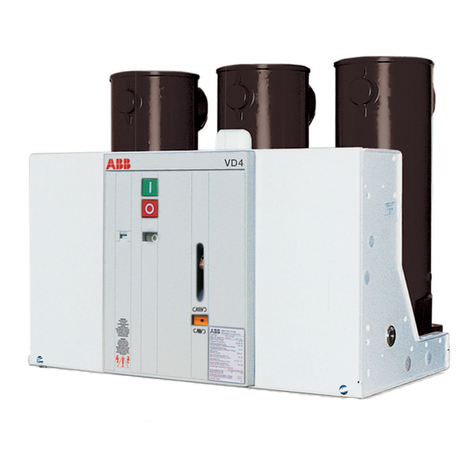
ABB
ABB VD4 Series operating manual
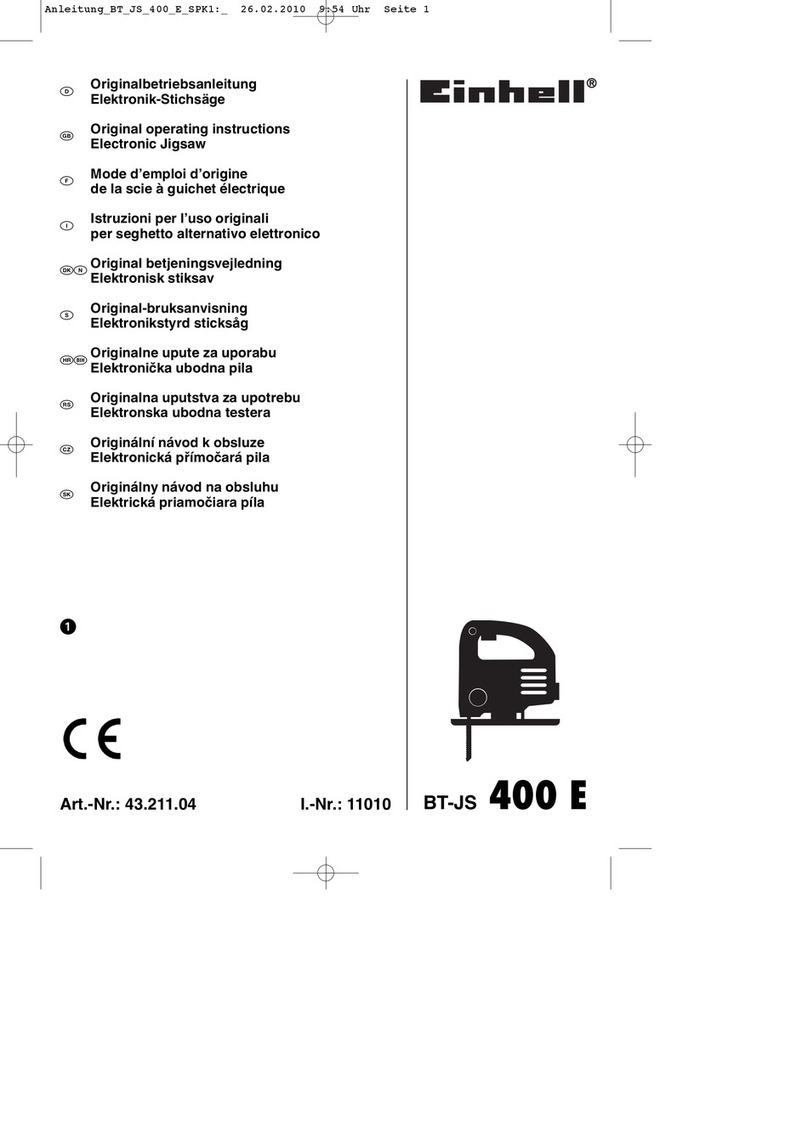
EINHELL
EINHELL BT-JS 400 E Original operating instructions
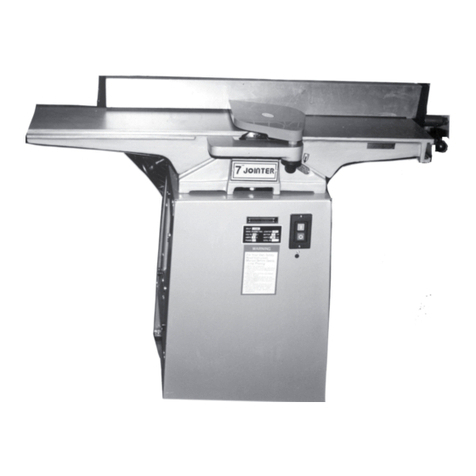
Central Machinery
Central Machinery 31849 Assembly & operating instructions

Bosch
Bosch GSH 27 VC Professional Original instructions
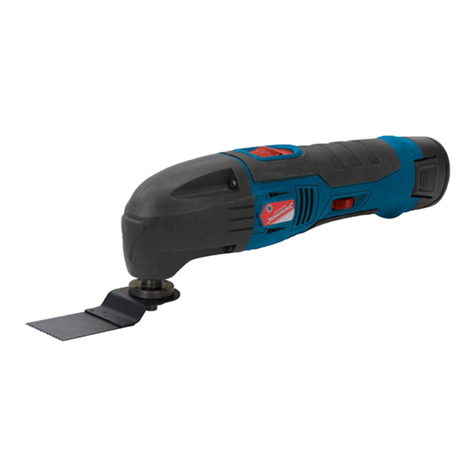
Silverline
Silverline 900798 Original instructions
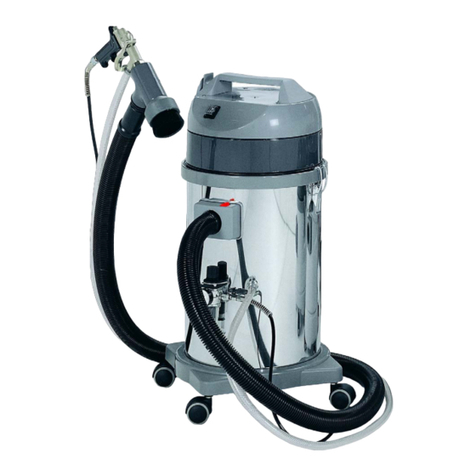
weha
weha Sabinox operating instructions
